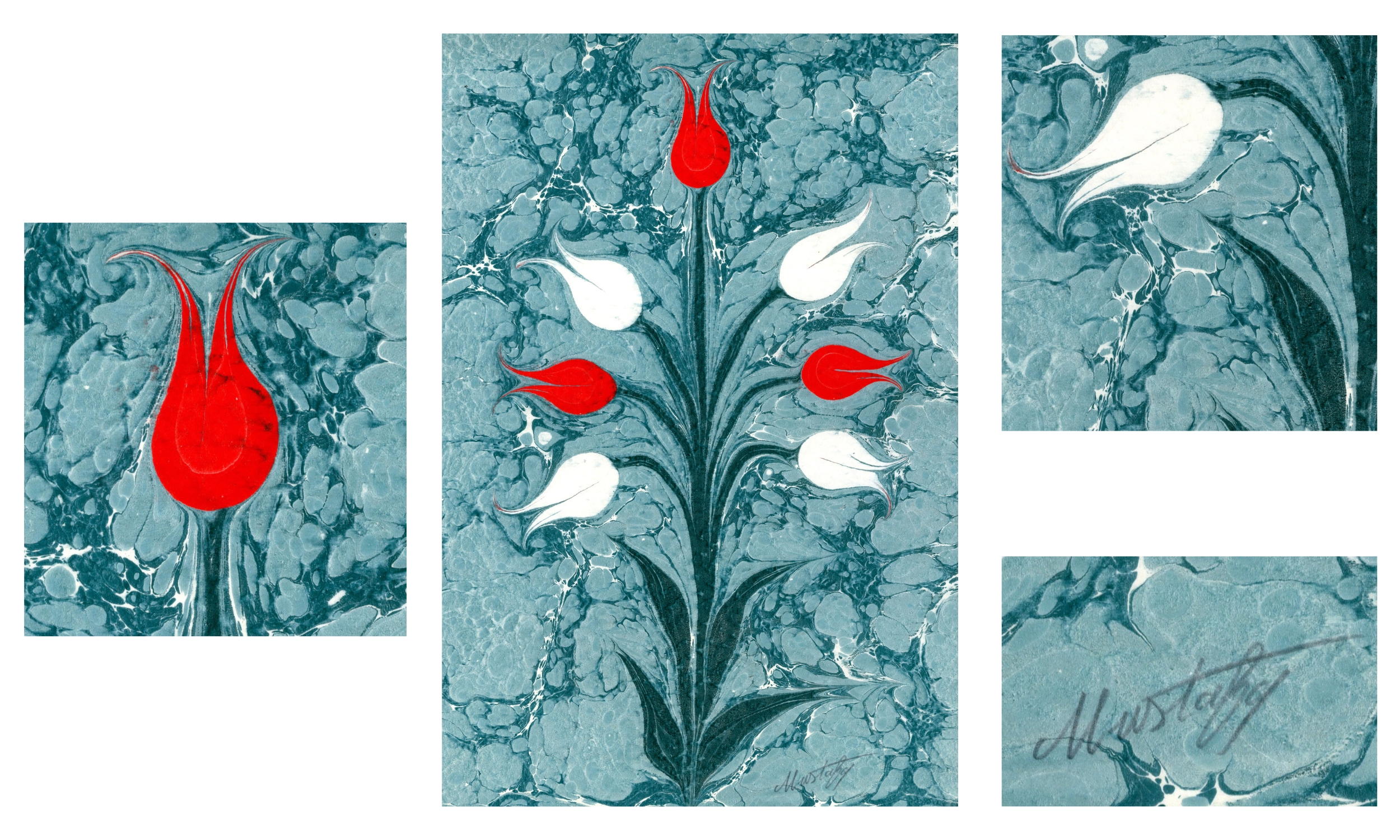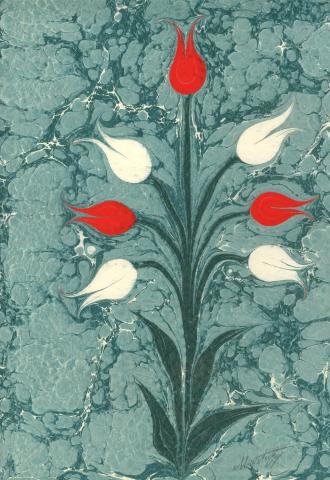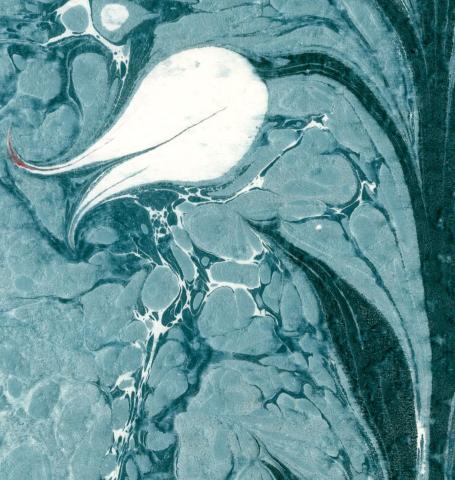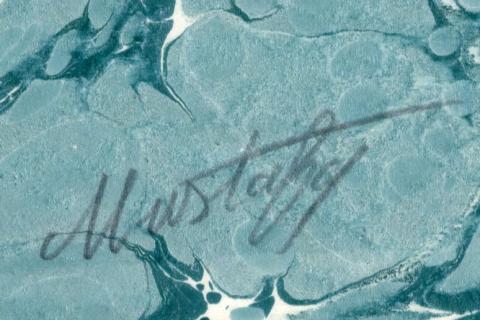Turkish ebru marbled paper
November 1, 2021
This month’s Artifact of the Month is a sheet of Turkish marbled paper, ebru, made by Mustafa Esat Düzgünman in 1977 (2019.09.0010). This ebru example consists of three red tulips and four white tulips on a single green stem with leaves on a dark blue-green stone patterned background. Düzgünman signed in pencil to the right of the stem’s base. He was one of the foremost ebru makers of the 20th century along with his mentor, Necmeddin Okyay. Okyay revolutionized floral designs, çiçekli, with the new style eventually being named after him.
Ebru is a form of aqueous art in which the canvas is in fact water rather than paper. Paint is mixed with ox gall and sprinkled onto a shallow tray of water where the artist then manipulates it with brushes, pins, and his own breath. The ox gall is vital to the process, as it prevents the colors from mixing and creates a swirled, marbled effect. After the artist has finished moving the paints around, a sheet of paper is laid over the tray, patted to eliminate bubbles, and then lifted off with the marbled design. The tulip is a popular subject both for practical reasons of painting on water and for its religious significance in Islam, the dominant religion of Turkey.
The symbolism of the tulip is tied to Islam because the Arabic word for tulip is similar to Allah and the writing of Allah in Arabic resembles the shape of the flower. According to legend, after marbling was introduced from eastern and central Asia, ebru developed in the Ottoman Empire in the 15th century to prevent forgery of official documents and to decorate prayer books. There are two predominant theories for the etymology of ebru: that it derives from the Persian words for either "water surface" or "clouded water." In either case, skill with water is a must!
Category: Decorative Papers
Region of Origin: European
Keywords:
Handmade





